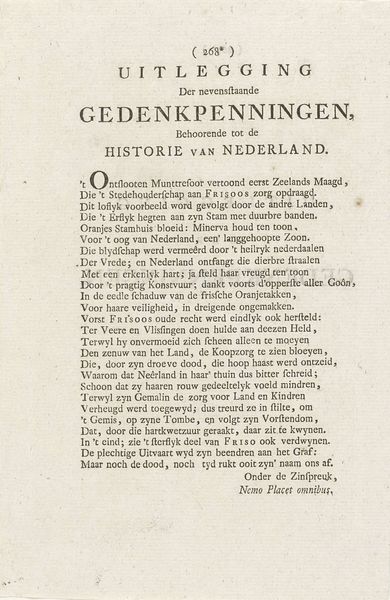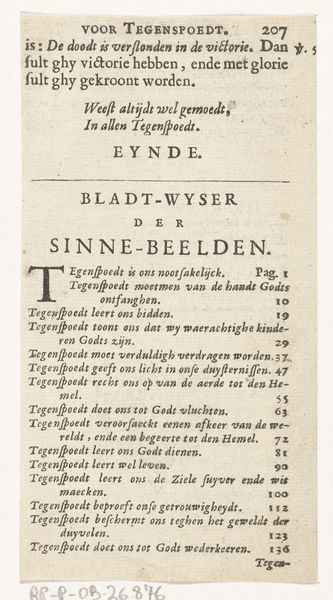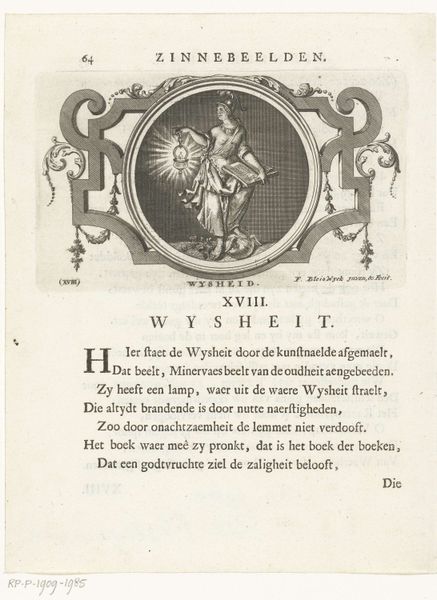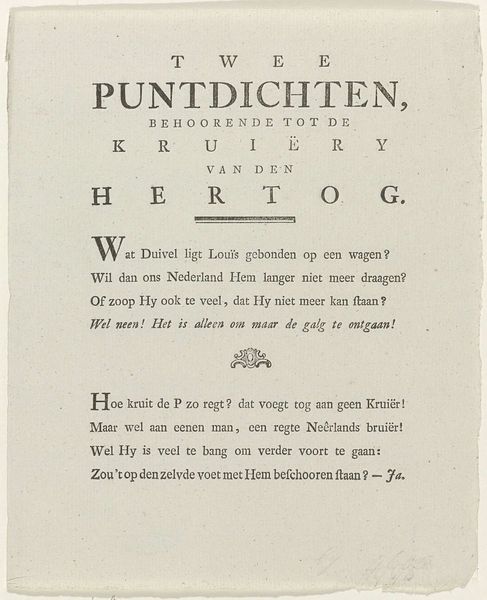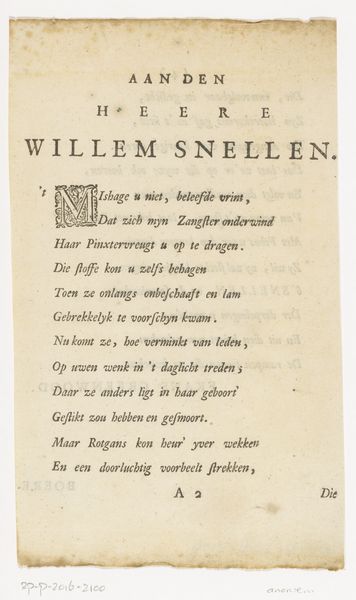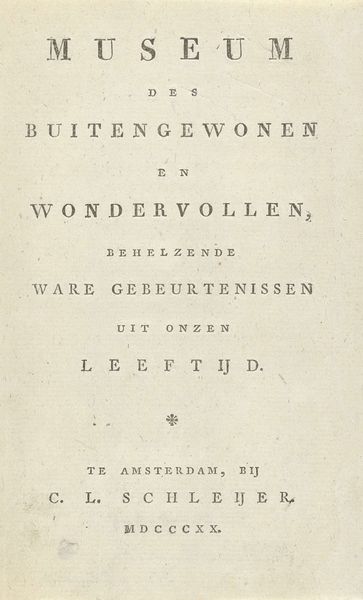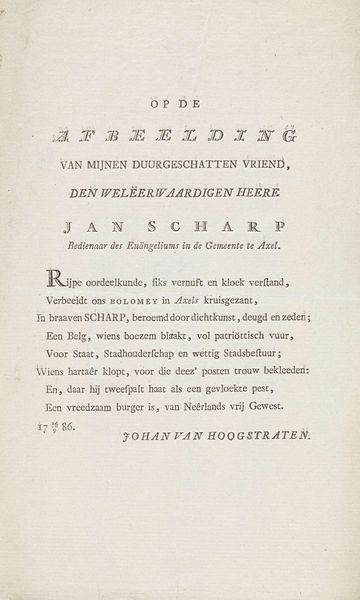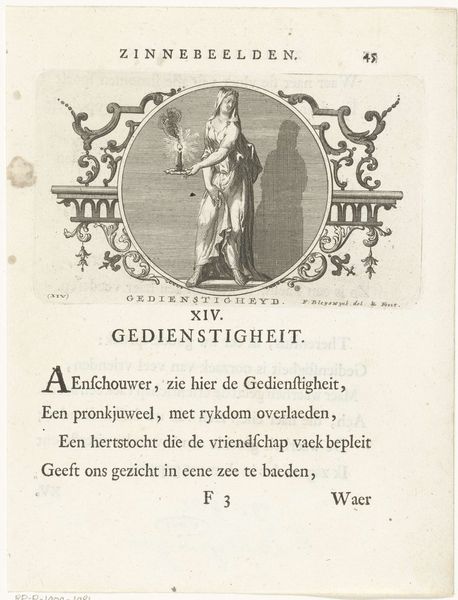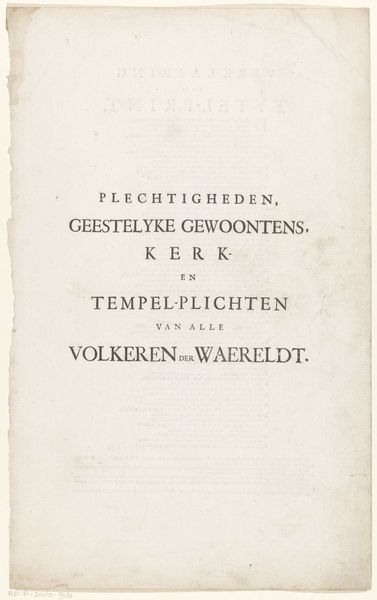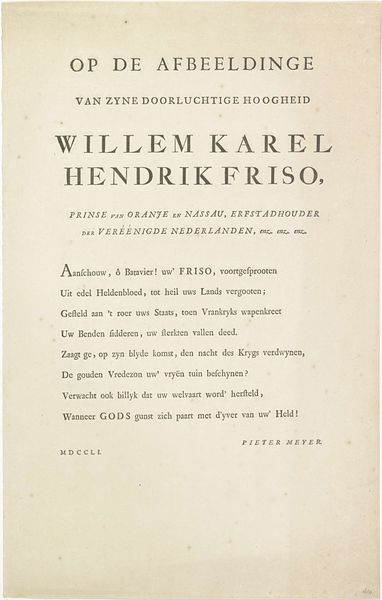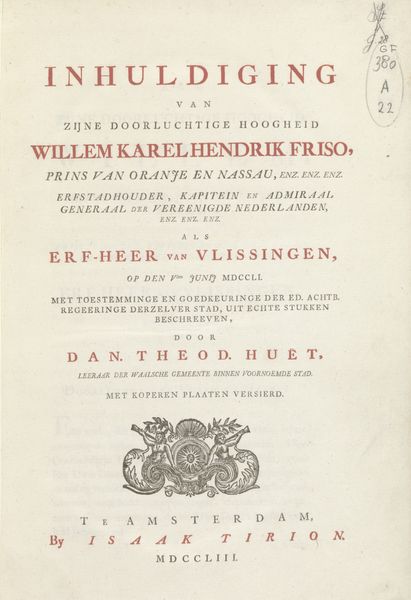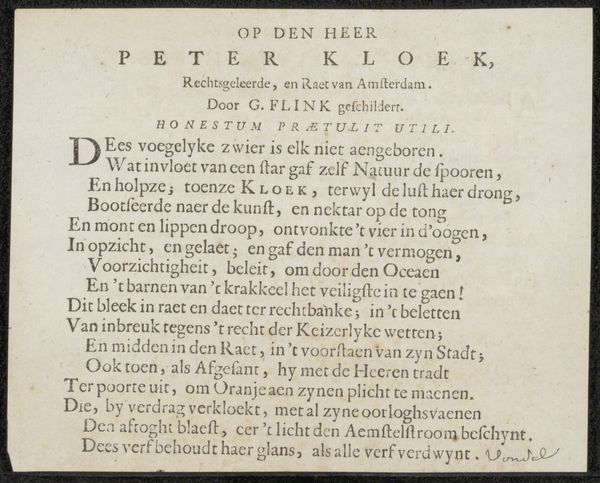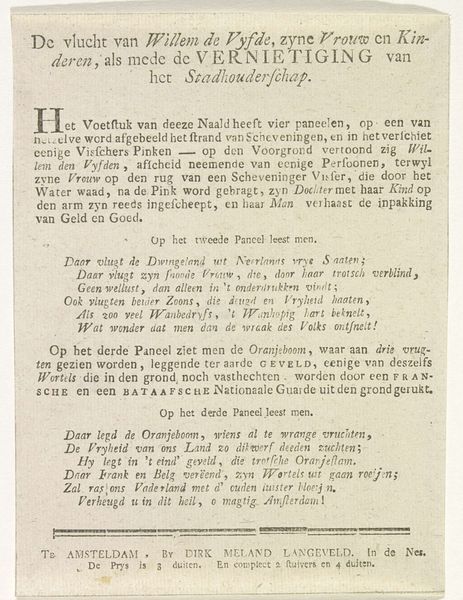
graphic-art, print, textile, typography
#
graphic-art
#
dutch-golden-age
# print
#
caricature
#
textile
#
typography
Dimensions: height 210 mm, width 163 mm
Copyright: Rijks Museum: Open Domain
Curator: Right, let's have a look at this… what feels like a page torn from some rebellious pamphlet. This is "Spotvers op de hertog van Brunswijk," which roughly translates to “Lampoon on the Duke of Brunswick,” dating from 1784. An anonymous piece, currently residing here at the Rijksmuseum. What do you make of it initially? Editor: It has the texture and weight of something…disruptive. Seeing so much text crammed onto a page, even old Dutch text, makes me think about information sharing outside of official channels and about how printing these types of visual and textual broadsides offered relative reproducibility outside the traditional book. Curator: Precisely! Think of this print as a kind of 18th-century meme, albeit a rather verbose one! The Duke of Brunswick was not having a good year in 1784. This lampoon serves as a satirical blast aimed at him. Notice the repetition of words like "Donder," or "thunder". There’s something forceful, even theatrical in this typographic barrage. Editor: And all that thunder leads directly to production: typesetting, printing, likely on a pretty rudimentary press—all this speaks to a really visceral mode of communicating dissent and resistance in a time of enormous change. I'd guess that this text was printed very, very quickly. You have to think about paper, ink, manpower and what this specific configuration allows you to produce, replicate and distribute.. Curator: A rapid-fire reaction to political missteps, indeed. I'm rather drawn to the overall tone: sardonic and darkly humorous. "Lampoon" is the best word, really; the artist, through words, orchestrates public shaming, right? Editor: Definitely shaming and definitely public. Think about the intended readership. These satirical broadsides depended on immediate readability by different audiences: even if you couldn't afford to purchase a printed sheet, a visual understanding of this form, hung or pasted in public, transmits an effective meaning of opposition and political satire. Curator: A snapshot of how print could ignite social passions. Even now, staring at this nearly two-and-a-half-century-old page, one can almost feel that simmering discontent… a very potent material witness to a volatile moment. Editor: I completely agree. By considering production—printing, publishing, and broadside distribution—we better appreciate how “Spotvers op de hertog van Brunswijk” functioned, and why someone chose to use text and typography in this context.
Comments
No comments
Be the first to comment and join the conversation on the ultimate creative platform.
